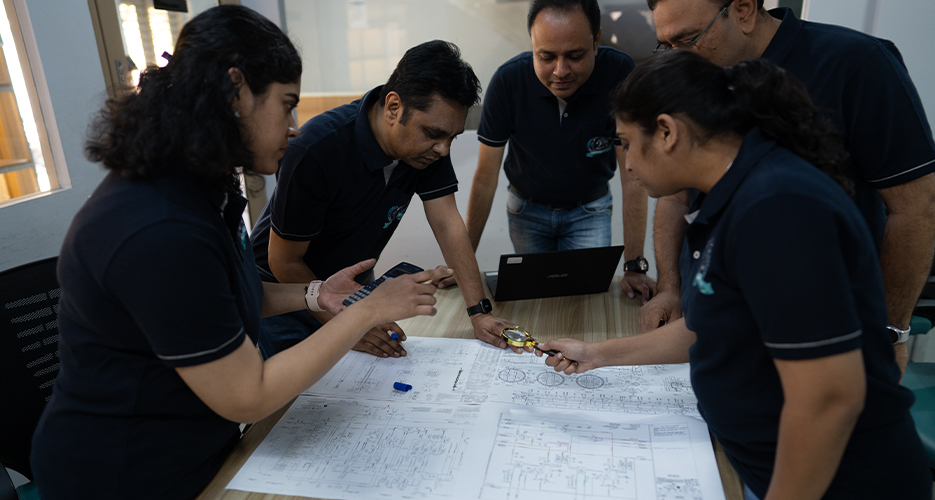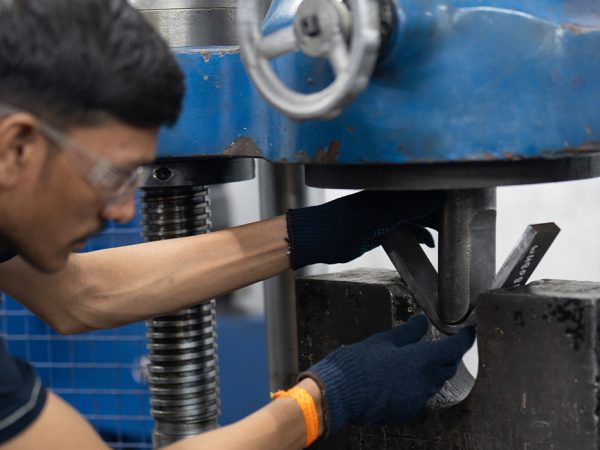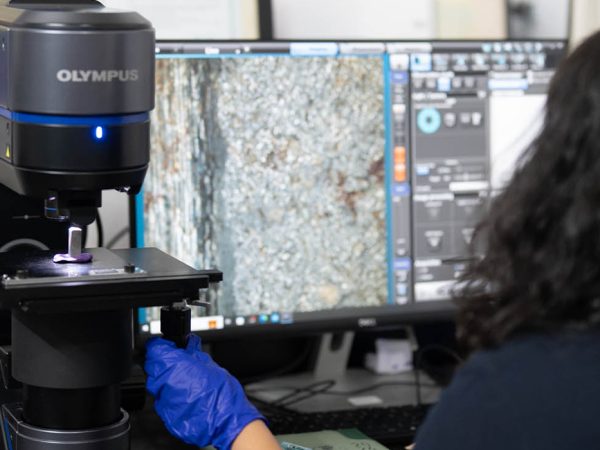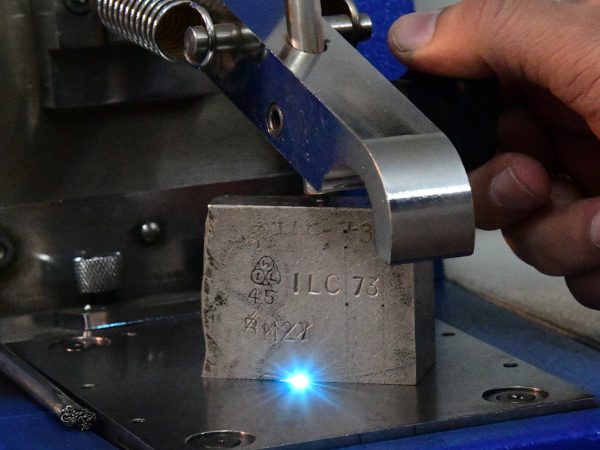In today’s industrial environment, maintaining plant safety and ensuring the reliability of equipment are crucial for uninterrupted operations and cost efficiency. One of the most effective approaches to achieve this is through a Risk-Based Inspection (RBI) process. Unlike conventional inspection methods that rely on fixed schedules, RBI focuses on prioritizing equipment and components based on their risk of failure, enabling plants to optimize inspection intervals, reduce downtime, and improve overall safety compliance.
At its core, Risk-Based Inspection (RBI) involves a quantitative assessment of the Probability of Failure (POF) and Consequence of Failure (COF) of industrial equipment. By evaluating both how likely a failure is and the potential impact of that failure, plants can focus resources where they are most needed, enhancing operational efficiency and reducing unnecessary maintenance costs.
What is Risk-Based Inspection (RBI)?
Risk-Based Inspection (RBI) is a systematic methodology used in process industries to assess the integrity of equipment such as pressure vessels, pipelines, storage tanks, heat exchangers, boilers, and reactors. The RBI approach identifies equipment that poses the highest risk, either due to a high probability of failure or severe consequences if a failure occurs.
Traditional inspection methods often follow rigid schedules, leading to either over-inspection of low-risk assets or under-inspection of critical high-risk components. RBI, on the other hand, customizes inspection strategies based on actual risk, ensuring that safety, reliability, and cost-effectiveness are balanced efficiently.

Objective of Risk-Based Inspection
The primary objective of Risk-Based Inspection (RBI) is to enhance plant safety and reliability while optimizing operational costs. Some key objectives include:
– Increasing Plant Availability: By focusing inspections on high-risk equipment, RBI minimizes unexpected breakdowns, ensuring the plant remains operational for longer durations.
– Reducing Maintenance Costs: RBI prevents over-inspection of low-risk equipment, saving time and resources.
– Optimizing Inspection Intervals: The methodology helps determine the most appropriate timing for inspections based on risk, rather than arbitrary schedules.
– Enhancing Safety Compliance: Prioritizing high-risk assets reduces the likelihood of accidents, ensuring compliance with regulatory standards and industry best practices.
TCR Advanced has leveraged the RBI methodology for decades, helping plants implement effective risk assessment strategies that improve equipment reliability while optimizing operational efficiency.
How Does Risk-Based Inspection Work?
The Risk-Based Inspection process combines technical expertise, historical data, and advanced software platforms to identify, analyze, and manage potential risks in industrial plants. Here’s a simplified step-by-step explanation of how RBI works:
1. Identification of Equipment
The first step is to list all critical equipment, including:
– Pressure vessels such as reactors, absorbers, distillation columns, and strippers.
– Heat exchangers, crude heaters, and fired heaters.
– Boilers, reformers, and utility power equipment.
– Interconnected piping systems and storage tanks.
– Overground and buried cross-country fluid distribution pipelines.
By identifying all relevant equipment, plants can ensure no critical component is overlooked during the inspection process.
2. Risk Assessment
The core of RBI lies in assessing risk, which involves two factors:
– Probability of Failure (POF): How likely is it that a piece of equipment will fail within a given period? POF is calculated using historical data, material properties, operational conditions, and degradation mechanisms.
– Consequence of Failure (COF): What is the impact if the equipment fails? Consequence of Failure (COF) considers safety hazards, environmental damage, operational disruption, and financial losses.
Combining POF and COF allows plants to rank equipment by risk, enabling focused inspections and preventive actions.
3. Prioritization
Once the risks are quantified, equipment is categorized based on priority:
– High-risk assets: Require frequent and detailed inspections.
– Medium-risk assets: Inspected periodically based on operating conditions.
– Low-risk assets: Inspections can be spaced out or simplified, reducing unnecessary downtime.
This prioritization is an essential component of RBI analysis methodology, ensuring that resources are applied where they have the greatest impact.
4. Selection of Inspection Methods
Different inspection techniques are chosen based on the type and risk profile of the equipment:
– Non-Destructive Testing (NDT): Ultrasonic testing, radiography, magnetic particle testing, and dye penetrant inspection.
– Visual Inspections: Regular monitoring for corrosion, leaks, or physical damage.
– Specialized Testing: Pressure testing, vibration analysis, and other condition-monitoring techniques.
The use of advanced software platforms, such as rbiAiOM®, helps manage and schedule inspections effectively while ensuring that results are accurately recorded for future analysis.
5. Review and Continuous Improvement
The RBI methodology is dynamic. Inspection results, operational changes, and new degradation data are continuously analyzed to update the risk assessment and inspection plans. This ensures ongoing optimization of inspection intervals, maintenance strategies, and overall plant safety.
Benefits of Risk-Based Inspection
Implementing a Risk-Based Inspection (RBI) methodology provides multiple benefits for industrial plants:
– Increased Safety and Equipment Reliability: By focusing on high-risk equipment, RBI reduces the likelihood of catastrophic failures.
– Fewer Planned and Unplanned Shutdowns: Optimized inspections minimize operational disruptions.
– Longer Inspection Intervals: Equipment that is low risk does not need frequent checks, saving both time and cost.
– Reduced Maintenance Costs: By prioritizing resources effectively, RBI reduces unnecessary labor and material expenditures.
– Consistency in Inspection Planning: The RBI process standardizes procedures, making inspection planning predictable and structured.
– Identification of Potential Damage Mechanisms: RBI identifies corrosion, wear, fatigue, and other degradation mechanisms before they become serious.
– Prioritization and Risk Assessment: Focuses on what truly matters for plant safety and operational continuity.
– Assessment of Process Changes: Evaluates how operational changes could impact degradation rates or equipment performance.
– Improved Team Collaboration: Promotes better communication between engineering, operations, and maintenance teams.
TCR Advanced has successfully implemented RBI across a wide range of plant equipment, ensuring long-term asset integrity while complying with international standards.
Challenges of Risk-Based Inspection
While RBI offers immense advantages, there are challenges that plants must consider:
– Data Accuracy: RBI depends on accurate operational and historical data. Poor or incomplete data can reduce the effectiveness of the risk assessment.
– Engineering Competence: Successful implementation requires skilled engineers with experience in mechanical, corrosion, and metallurgical analysis.
– Team Collaboration: Effective RBI requires strong cooperation between plant personnel and external experts.
– Quality of Output: The comprehensiveness of the RBI study and the quality of inspection reports directly impact reliability.
Despite these challenges, a properly implemented Risk-Based Inspection process ensures measurable improvements in safety, reliability, and cost efficiency.
TCR’s RBI Technology and Support Services
TCR Advanced has been a global leader in RBI since 1973. Their approach combines expert judgment, RBI analysis methodology, and proprietary software platforms like rbiAiOM® to deliver actionable insights. Key services include:
– RBI Technology Implementation Services – Deploying RBI across plant equipment for consistent safety and reliability.
– Total Asset Integrity Management Support – Ensuring long-term operational performance.
– Fitness-For-Service Assessments (API 579, BS 7910) – Evaluating equipment for continued use.
– Material Damage Analysis & Failure Investigation – Understanding causes of degradation to prevent future failures.
– Training & Technology Transfer – Equipping in-house engineers with RBI skills and knowledge.
TCR’s RBI process covers a wide range of equipment:
– Pressure vessels (reactors, strippers, distillation columns, heat exchangers, boilers)
– Fired heaters, reformers, and utility equipment
– Interconnected piping networks
– Overground and buried pipelines
– Storage tanks
By integrating RBI with Risk Assessment, Probability of Failure (POF), and Consequence of Failure (COF) evaluations, TCR ensures that inspection priorities align with both operational and safety objectives.
RBI and API Standards
Risk-Based Inspection methodology is aligned with international standards such as API RP 580 and API RP 581, which provide guidelines for implementing RBI programs, evaluating risk, and defining inspection intervals. These standards ensure:
– Systematic risk evaluation of static equipment.
– Consistent use of POF and COF for inspection planning.
– Optimization of inspection schedules to reduce costs and downtime.
By adhering to API RP 580 and 581, plants can ensure regulatory compliance while leveraging RBI risk analysis for proactive maintenance.
FAQs
1. What makes RBI different from traditional inspection methods?
RBI prioritizes inspections based on risk, whereas traditional methods follow fixed schedules regardless of equipment condition. This ensures resources are focused on high-risk components.
2. How often should RBI be updated?
RBI should be reviewed regularly, especially after significant operational changes, equipment modifications, or post-inspection findings.
3. Can RBI prevent unplanned shutdowns?
Yes. By identifying high-risk equipment and potential failure mechanisms, RBI reduces the likelihood of unexpected breakdowns.
4. Do we need specialized software for RBI?
While software like rbiAiOM® helps streamline analysis and documentation, RBI can also be implemented using structured risk assessment methods combined with expert judgment.
5. Is RBI applicable to all types of equipment?
RBI is suitable for static equipment like pressure vessels, heat exchangers, boilers, pipelines, and storage tanks — essentially any component where failure could have significant safety or financial consequences.
Conclusion
Risk-Based Inspection (RBI) is no longer optional for modern process industries—it is an essential approach to ensure plant safety, reliability, and efficiency. By combining quantitative risk assessment with expert judgment and advanced tools, RBI allows plants to:
– Focus on high-risk assets.
– Optimize inspection schedules and reduce downtime.
– Enhance compliance with API RP 580 and 581 standards.
– Improve team coordination and asset integrity management.
With decades of experience, TCR Advanced has demonstrated that implementing a robust RBI process delivers measurable benefits, from fewer unplanned shutdowns and lower maintenance costs to increased safety and equipment reliability. The combination of RBI analysis methodology, risk assessment, POF, COF, and compliance with global standards ensures that industrial plants operate efficiently, safely, and with long-term sustainability in mind.
By adopting Risk-Based Inspection methodology, plants can move beyond reactive maintenance and embrace a proactive approach that prioritizes safety, performance, and operational excellence — the cornerstone of modern industrial asset management.







